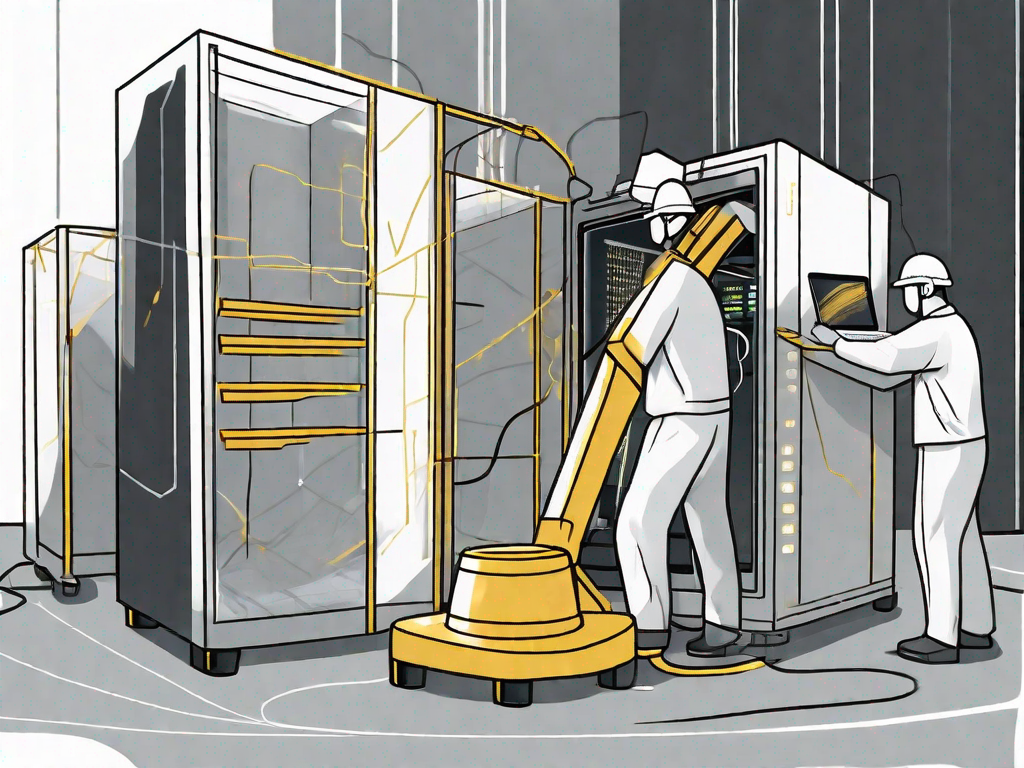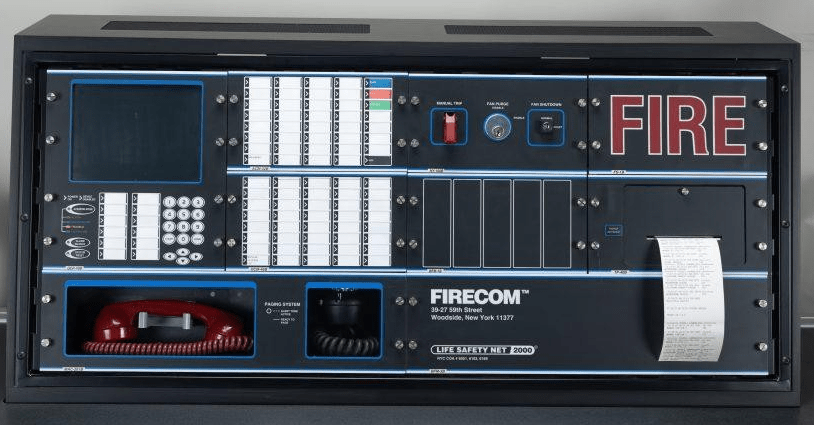
Data and System Operation Safety when Transitioning Systems
In today’s ever-evolving technological landscape, transitioning systems has become a crucial aspect of organizational growth and development. However, this process is not without its risks. To ensure a smooth and secure system transition, it is essential to implement proper safety precautions. This article will delve into the various safety measures and considerations that should be taken when transitioning systems.
Understanding System Transition
Before delving into the safety precautions, it is important to understand what system transition entails. System transition refers to the process of moving from an old system to a new one. This could include upgrading software, migrating data, or implementing a completely new system altogether. The ultimate goal of system transition is to improve efficiency, productivity, and overall performance within an organization.
System transition is a complex and multifaceted process that requires careful planning and execution. It involves a series of steps, such as analyzing the existing system, identifying the requirements of the new system, designing the transition plan, and implementing the necessary changes. Each step requires attention to detail and a thorough understanding of the organization’s needs and goals.
During the system transition process, it is essential to consider the impact on various stakeholders, including employees, customers, and partners. Communication and training play a crucial role in ensuring a smooth transition and minimizing resistance to change. Organizations must provide clear instructions and support to help users adapt to the new system and maximize its benefits.
Defining System Transition
In simple terms, system transition involves transferring data, processes, and functionalities from one system to another. It requires meticulous planning, seamless integration, and thorough testing to ensure a successful transition. From a safety perspective, any disruption or failure during this process can have significant consequences, ranging from data loss to system malfunction, ultimately impacting an organization’s operations and reputation.
The process of system transition typically begins with a comprehensive assessment of the existing system. This includes evaluating its strengths, weaknesses, and limitations. Based on this assessment, organizations can determine the requirements for the new system and develop a transition plan that addresses these needs.
Once the transition plan is in place, organizations must carefully execute each step, ensuring that data is transferred accurately and securely. This may involve data migration, where information from the old system is transferred to the new one. It is crucial to validate the integrity of the data during this process to avoid any loss or corruption.
Furthermore, system transition often involves integrating new software or hardware components into the existing infrastructure. This integration requires thorough testing to ensure compatibility and seamless operation. Organizations may also need to modify existing processes or develop new ones to align with the capabilities of the new system.
Importance of System Transition
System transition provides organizations with a multitude of benefits, including enhanced functionality, increased security, and improved performance. However, it is crucial to recognize and mitigate the potential risks that come with this process, to ensure a smooth transition that minimizes downtime and maintains the integrity of data and systems.
One of the key benefits of system transition is the ability to leverage new technologies and features that were not available in the old system. This can lead to increased efficiency and productivity, as well as improved decision-making capabilities. For example, a new system may offer advanced data analytics tools that allow organizations to gain valuable insights and make informed business decisions.
Another important aspect of system transition is the opportunity to enhance security measures. As technology evolves, so do the threats and vulnerabilities that organizations face. By transitioning to a new system, organizations can implement stronger security protocols and safeguards to protect sensitive data and prevent unauthorized access.
Furthermore, system transition can help organizations streamline their processes and eliminate inefficiencies. By analyzing the existing system and identifying areas for improvement, organizations can optimize workflows and automate repetitive tasks, freeing up valuable time and resources.
In conclusion, system transition is a complex and critical process that requires careful planning, execution, and risk management. It offers organizations the opportunity to improve efficiency, enhance security, and optimize performance. By understanding the intricacies of system transition and implementing the necessary precautions, organizations can ensure a successful transition that brings long-term benefits and growth.
Identifying Potential Risks in System Transition
Every system transition carries inherent risks that can jeopardize the success of the process. By identifying and understanding these risks beforehand, organizations can plan and implement the necessary safety measures to minimize their impact.
During a system transition, it is crucial for organizations to be aware of the potential risks that may arise. These risks can range from technical issues to operational challenges, and they must be carefully assessed to ensure a smooth and successful transition.
Common Risks in System Transition
When transitioning systems, organizations often encounter common risks such as data corruption, compatibility issues, and integration challenges. These risks can lead to system downtime, data loss, and even financial loss if not properly addressed.
Data corruption is a significant risk that organizations must be prepared for during a system transition. It can occur due to various factors, including improper data migration processes or software glitches. To mitigate this risk, organizations should conduct thorough data validation and implement robust data backup strategies.
Compatibility issues are another common risk that organizations face during system transitions. These issues can arise when the new system is not fully compatible with existing hardware or software components. To address this risk, organizations should conduct compatibility tests and ensure that all necessary updates or modifications are made prior to the transition.
Integration challenges can also pose a significant risk during system transitions. Organizations often rely on multiple systems that need to seamlessly integrate with each other. Failure to properly integrate these systems can result in data inconsistencies and operational inefficiencies. To mitigate this risk, organizations should thoroughly test the integration process and establish clear communication channels between different systems.
Unforeseen Risks in System Transition
In addition to the common risks, unforeseen risks also pose a threat during system transition. These risks may arise from unexpected software conflicts, hardware failures, or insufficient backup systems. It is imperative for organizations to maintain a flexible approach and have contingency plans in place to address any unforeseen risks that may arise.
Software conflicts can occur when the new system is not compatible with existing software applications or when different software components conflict with each other. To mitigate this risk, organizations should conduct thorough compatibility tests and work closely with software vendors to resolve any conflicts.
Hardware failures can also present unforeseen risks during system transitions. These failures can disrupt the transition process and lead to system downtime. To minimize this risk, organizations should ensure that all hardware components are properly tested and maintained before the transition. Additionally, having backup hardware systems in place can provide a safety net in case of any unexpected failures.
Insufficient backup systems can be a significant risk during system transitions. In the event of data loss or system failure, having robust backup systems is crucial to ensure business continuity. Organizations should regularly evaluate their backup systems and implement redundancy measures to mitigate this risk.
By considering both the common and unforeseen risks in system transition, organizations can better prepare themselves for a successful transition. It is essential to conduct thorough risk assessments, develop comprehensive mitigation strategies, and maintain flexibility throughout the process to address any challenges that may arise.
Planning for Safe System Transition
Adequate planning is crucial for a safe and successful system transition. By following a structured approach, organizations can ensure that all necessary safety measures are implemented and risks are minimized.
When it comes to planning for a safe system transition, there are several key steps that organizations should take to ensure a smooth and successful process. These steps involve assembling a dedicated transition team, developing a comprehensive plan, and implementing effective communication and collaboration strategies.
Steps to Ensure Safe Transition
The first step in a safe system transition is to assemble a dedicated transition team to oversee the process. This team should include individuals with expertise in the old and new systems, as well as individuals responsible for data migration and system testing. By bringing together a diverse group of professionals, organizations can tap into a wide range of knowledge and experience, increasing the likelihood of a successful transition.
Once the team is in place, it is important to establish clear roles and responsibilities for each team member. This ensures that everyone knows what is expected of them and can contribute effectively to the transition process. Effective collaboration and communication within the team are vital for a successful transition.
With the transition team in place, the next step is to develop a comprehensive plan that outlines each step of the transition process. This plan should encompass every aspect, from data backup and migration to user training and system testing. By outlining clear objectives, timelines, and responsibilities, the transition team can ensure a smooth and safe transition.
When it comes to data backup and migration, organizations must carefully assess the data that needs to be transferred from the old system to the new one. This involves identifying critical data, ensuring its integrity, and developing a robust backup strategy to prevent any loss or corruption during the transition process.
User training is another crucial aspect of a safe system transition. Organizations should invest time and resources into training their employees on how to use the new system effectively. This includes providing comprehensive training materials, conducting hands-on workshops, and offering ongoing support to address any questions or concerns that may arise.
System testing is also a critical step in ensuring a safe transition. Organizations should conduct thorough testing of the new system to identify any potential issues or bugs before fully implementing it. This includes testing the system’s functionality, compatibility with other systems, and its ability to handle the organization’s specific needs and requirements.
In conclusion, planning for a safe system transition requires careful consideration and attention to detail. By assembling a dedicated transition team, developing a comprehensive plan, and implementing effective communication and collaboration strategies, organizations can ensure a smooth and successful transition. Additionally, paying close attention to data backup and migration, user training, and system testing will further minimize risks and ensure the safety of the transition process.
Implementing Safety Measures During Transition
During the actual transition process, several safety measures should be implemented to minimize risks and ensure system stability. These measures include:
Safety Protocols to Follow
Implementing safety protocols helps mitigate risks during system transition. This includes conducting regular backups, verifying data integrity before and after migration, and ensuring secure access controls are in place. By adhering to these protocols, organizations can minimize the risk of data loss and maintain system integrity throughout the transition.
In addition to regular backups, organizations should also consider implementing redundant systems during the transition period. Redundancy ensures that even if one system fails, there is a backup system in place to maintain operations. This can be achieved through the use of mirrored servers or cloud-based solutions.
Another important safety measure is to conduct thorough testing of the new system before fully transitioning. This includes running simulations and stress tests to identify any potential vulnerabilities or performance issues. By addressing these issues before the transition, organizations can minimize the risk of system failures and ensure a smooth transition process.
Monitoring and Controlling the Transition Process
Continuous monitoring and control of the transition process are critical for the safety of systems and data. Regular checkpoints should be established to evaluate progress and identify any issues or deviations from the plan. This allows the transition team to take immediate corrective actions and ensure that the transition stays on track.
In addition to regular checkpoints, organizations should also consider implementing real-time monitoring systems. These systems can provide instant alerts and notifications in case of any abnormalities or security breaches during the transition. By having a proactive monitoring system in place, organizations can quickly respond to any potential threats and minimize the impact on system stability.
Furthermore, it is important to establish clear communication channels and escalation procedures during the transition. This ensures that any issues or concerns can be promptly addressed by the appropriate stakeholders. Regular communication and collaboration among team members also help to identify potential risks and find effective solutions to mitigate them.
Post-Transition Safety Considerations
Once the system transition is complete, it is important to evaluate its success and implement post-transition safety measures to maintain system integrity and minimize potential risks.
Evaluating the Success of the Transition
After the transition, organizations should conduct an evaluation to determine whether the newly implemented system meets the desired goals and requirements. This evaluation can include assessing user feedback, analyzing performance metrics, and conducting comprehensive testing to ensure that all functionalities are working as expected.
During the evaluation process, organizations can gather valuable insights from users who have interacted with the new system. User feedback can provide valuable information about the system’s usability, performance, and overall satisfaction. By actively listening to user feedback, organizations can identify areas for improvement and make necessary adjustments to enhance the user experience.
In addition to user feedback, analyzing performance metrics is crucial in evaluating the success of the transition. By monitoring key performance indicators, organizations can assess the system’s efficiency, reliability, and responsiveness. This data-driven approach allows organizations to identify any bottlenecks or areas of improvement that may have been overlooked during the transition process.
Comprehensive testing is another essential aspect of evaluating the success of the transition. By conducting rigorous testing, organizations can ensure that all functionalities of the new system are working as expected. This includes testing different scenarios, simulating high loads, and verifying the system’s compatibility with various devices and browsers. Thorough testing helps identify any bugs, glitches, or compatibility issues that need to be addressed to maintain system integrity.
Maintaining System Safety Post-Transition
Even after the transition process is complete, system safety should remain a priority. This includes regular system updates, employing adequate cybersecurity measures, and conducting periodic audits to identify any vulnerabilities or areas for improvement.
Regular system updates are essential to keep the system up-to-date with the latest security patches and bug fixes. By staying current with updates, organizations can ensure that their system is protected against emerging threats and vulnerabilities. These updates also often include new features and enhancements that can further improve system performance and user experience.
Employing adequate cybersecurity measures is crucial in maintaining system safety post-transition. This includes implementing strong access controls, encryption protocols, and intrusion detection systems. Organizations should also educate their employees about best practices for data security and provide regular training to mitigate the risk of human error.
Periodic audits are an effective way to identify any vulnerabilities or areas for improvement in the system’s security. These audits can be conducted by internal or external experts who thoroughly assess the system’s infrastructure, configurations, and policies. By identifying and addressing any weaknesses, organizations can proactively strengthen their system’s security posture.
In conclusion, transitioning systems is a pivotal process that organizations must undertake to stay competitive and agile. However, it is crucial to prioritize safety when navigating this complex journey. By understanding the system transition process, identifying potential risks, planning meticulously, implementing safety measures, and considering post-transition safety, organizations can ensure a smooth and secure system transition that sets the foundation for a successful future.


